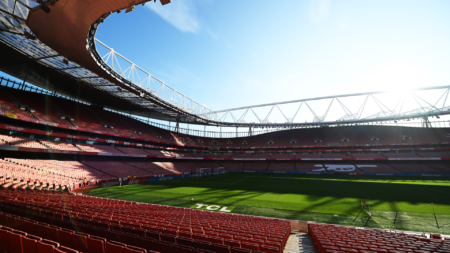Financial Setback for Liverpool
In the 2023-24 season, Liverpool Football Club reported a major financial loss of £57 million, a significant increase from the £9 million loss recorded the previous year. The primary reason for this substantial drop in revenue is the club’s failure to qualify for the UEFA Champions League, Europe’s most prestigious club competition. Missing out on the Champions League has a profound impact on a club’s finances, primarily through reduced media earnings. This financial hit underscores the importance of consistent high-level performance in securing top-tier revenue streams and highlights the challenges Liverpool faces in maintaining financial stability during a period of transition.
Revenue and Cost Dynamics
The financial report reveals that Liverpool’s media revenue plummeted by £38 million, a direct consequence of not participating in the Champions League. This reduction in media earnings is a stark contrast to the club’s other revenue streams, which showed growth. Commercial revenue, for instance, increased by £36 million, surpassing the £300 million mark for the first time. Matchday earnings also saw a notable rise of £22 million, thanks to the opening of the new Anfield Road stand. However, these gains were offset by a significant increase in overall costs, which climbed by a similar amount to the loss in media revenue. The club’s wage bill increased by £13 million, reaching £386 million, despite the departures of high-earning players such as Roberto Firmino, Fabinho, Jordan Henderson, Naby Keita, James Milner, and Alex Oxlade-Chamberlain.
New Signings and Contracts
The club’s financial strain was exacerbated by new signings and contract renewals. Liverpool invested heavily in the transfer market, bringing in Alexis Mac Allister, Dominik Szoboszlai, Wataru Endo, and Ryan Gravenberch for a combined £150 million. Additionally, the club extended contracts for 11 players, which, while necessary to retain key talent, further increased expenses. These strategic moves are aimed at bolstering the team’s strength and competitive edge, but they come with a hefty price tag. The club’s commitment to high-quality acquisitions and player retention demonstrates their ambition to return to the top of European and domestic football, despite the financial challenges.
Inflation and Rising Costs
Inflation has also played a significant role in Liverpool’s financial landscape. Over the past eight years, matchday costs have risen by nearly 80%, and projections suggest that these costs could double by 2027. Utility bills have more than doubled in just three years, and general expenses have surged by 88% since 2018. These escalating costs highlight the broader economic pressures affecting football clubs and the need for efficient financial management to mitigate their impact. The club must balance these rising operational costs with the revenue generated from commercial and matchday activities to ensure long-term sustainability.
Future Outlook and Financial Strategies
Despite the significant loss, Liverpool’s Chief Financial Officer, Jenny Beacham, remains optimistic about the club’s financial future. "Operating a financially sustainable club continues to be our priority, and with the continued increase in costs, it’s essential to grow income streams year on year to maintain financial stability," Beacham stated. The club’s commercial success and the opening of the new Anfield Road stand are positive indicators of their ongoing efforts to enhance revenue. Beacham emphasized that these initiatives demonstrate the club’s commitment to competing at the highest levels of football. The reduction in bank debt by £10 million to £116 million is another sign of the club’s financial resilience and prudent management.
Path to Recovery
Looking ahead, Liverpool’s return to the Champions League is expected to provide a significant financial boost, generating at least £83.8 million, with the potential to earn an additional £47 million depending on their performance in the competition. Success in the Premier League and the full utilization of the new Anfield Road stand could further fortify the club’s financial position. These factors, combined with the club’s strategic focus on sustainable growth and cost management, offer a promising path to recovery. Liverpool’s ability to navigate these financial challenges while maintaining their competitive spirit will be crucial in their journey back to football’s elite level.











